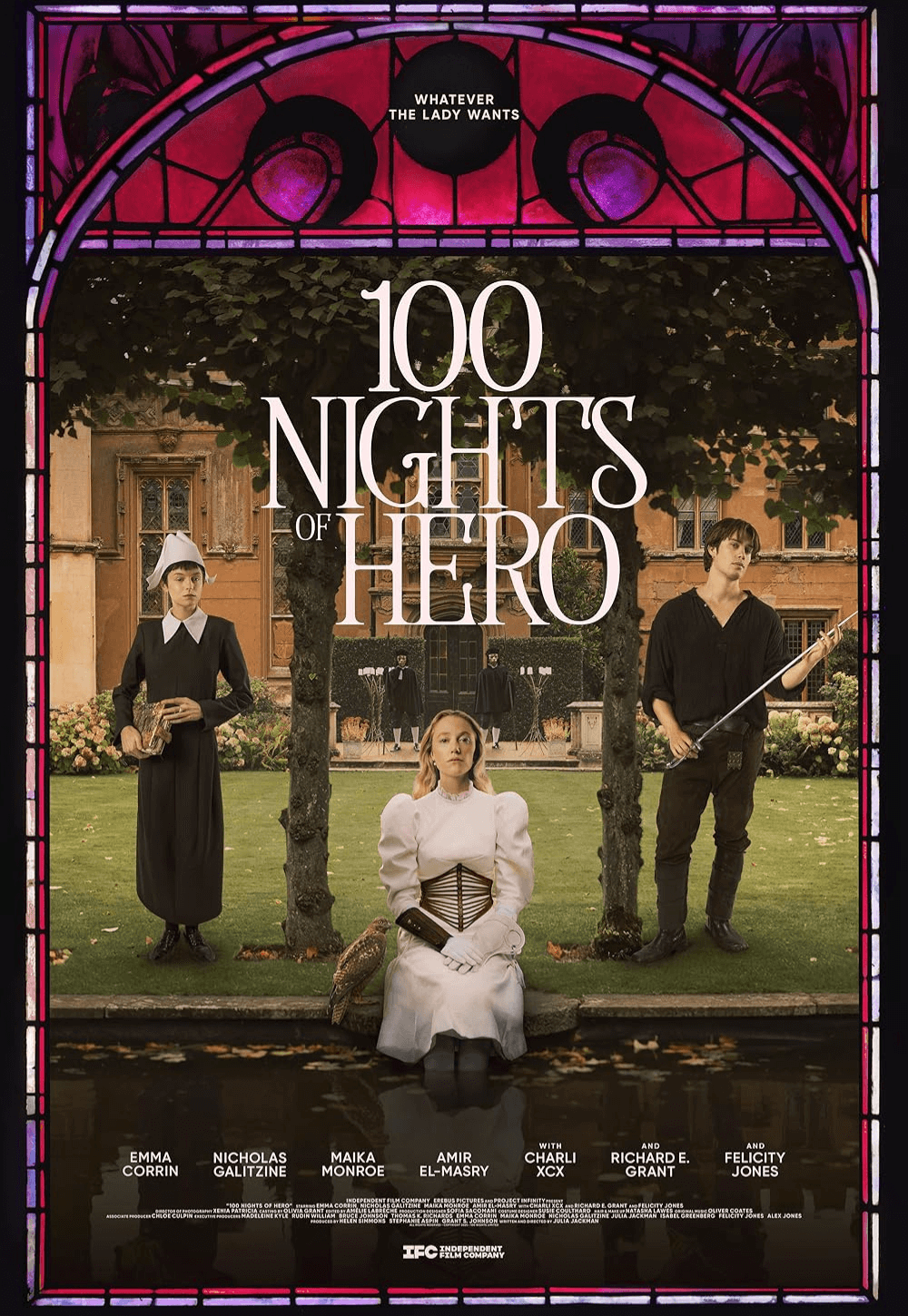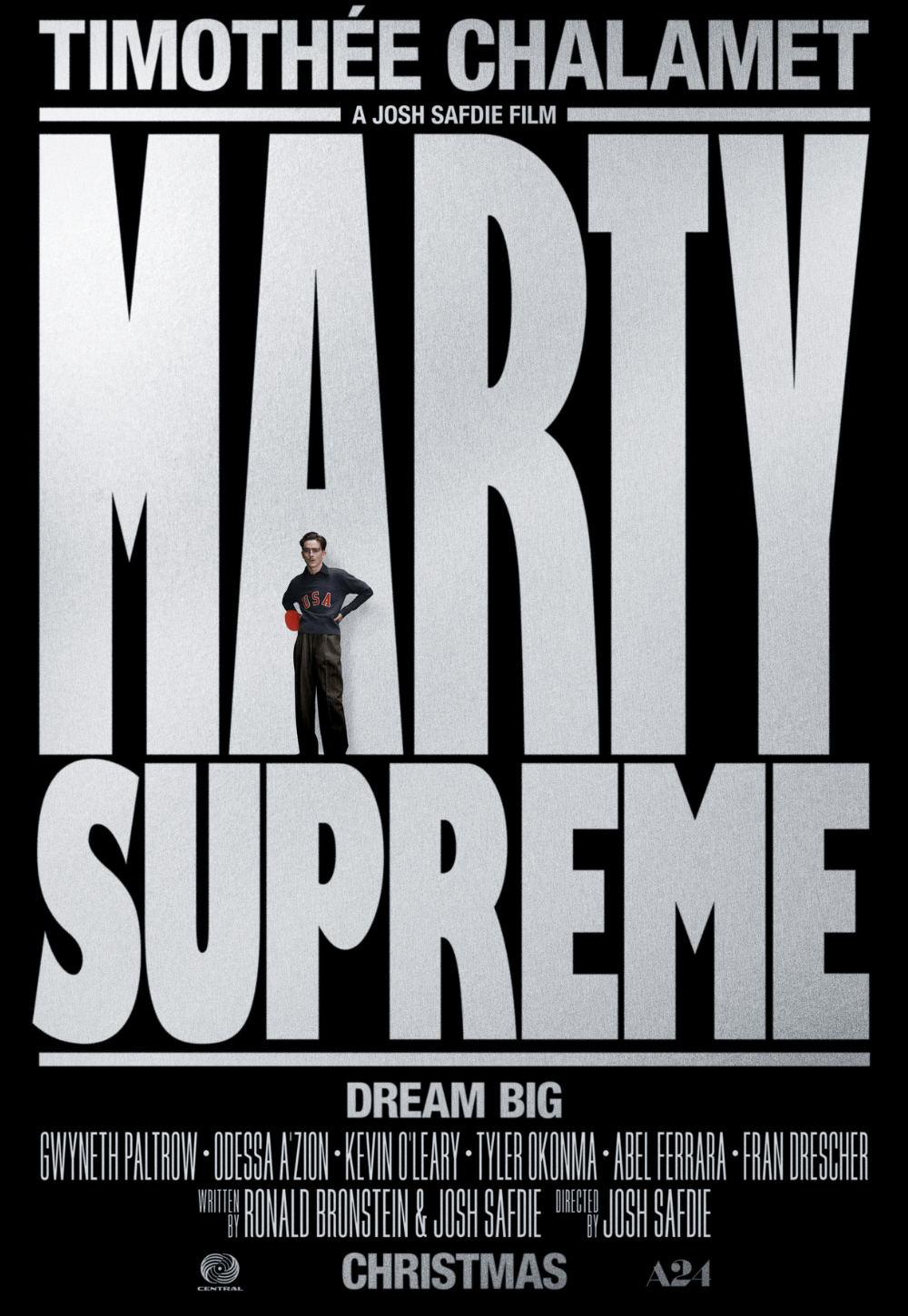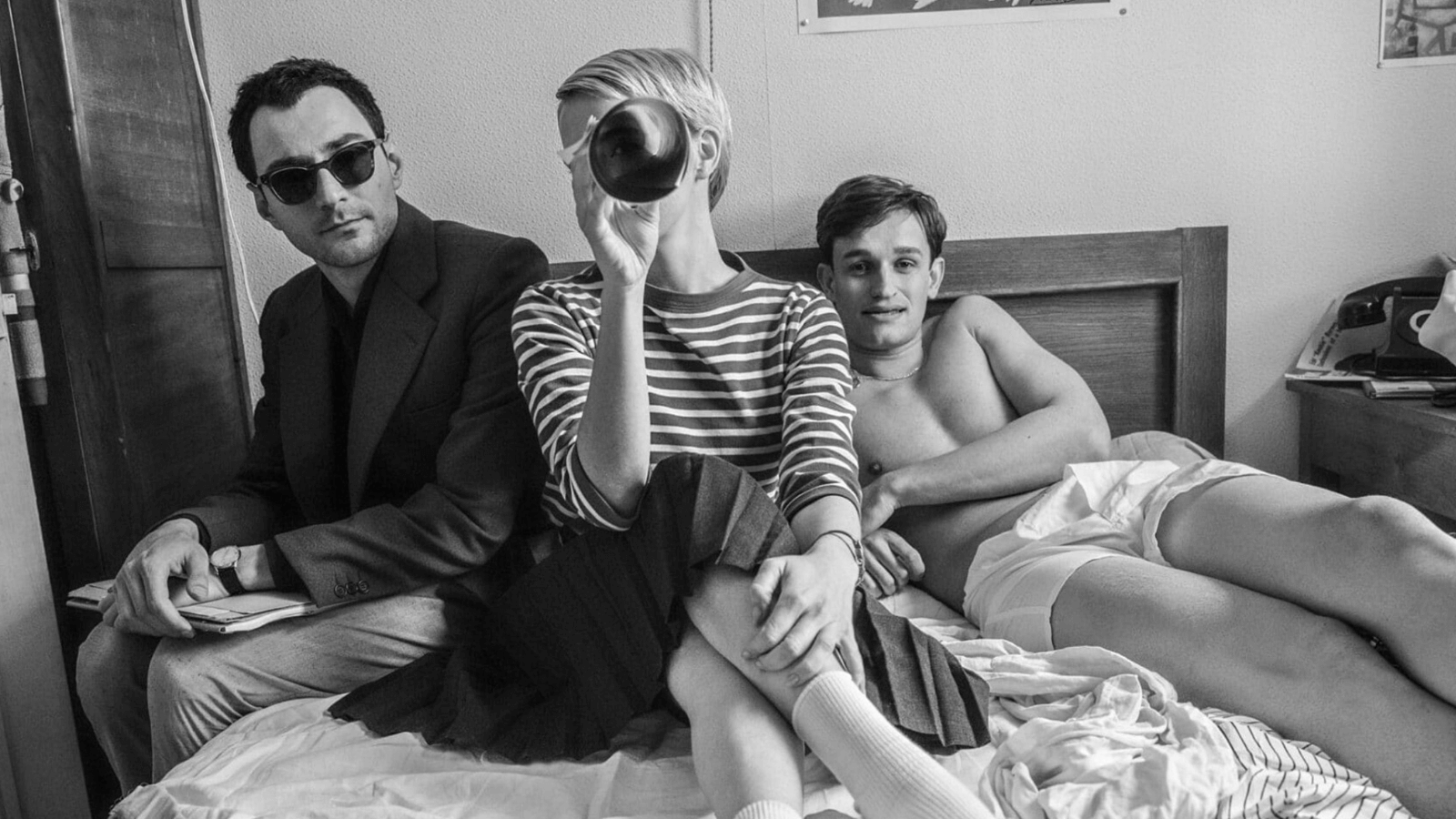
Zurich Film Festival Dispatch – Part 1
By David Hill | September 29, 2025
The 21st Zurich Film Festival runs from September 25 to October 5. Check here for the full lineup. Some films mentioned below will be reviewed separately in full-length writeups, but for now, here are some initial impressions.
The Zurich Film Festival (ZFF) once again offers the opportunity to get an early look at some of the year’s buzziest films. In particular, the festival’s Gala Premieres section includes several highly anticipated titles, such as Yorgos Lanthimos’ Bugonia, Guillermo del Toro’s Frankenstein, and Park Chan-wook’s No Other Choice. Additionally, an impressive array of high-profile guests will come to Zurich to present their new work, including Dakota Johnson (Splitsville), Russell Crowe (Nuremberg), and Colin Farrell (Ballad of a Small Player).
While the Gala Premieres and famous guests will likely get the most attention, the festival’s other sections also have plenty to offer. Take the Signatures section, which presents auteur films and includes Kelly Reichardt’s The Mastermind, and the Border Lines section, which presents narrative and documentary films about human rights and includes Kaouther Ben Hania’s The Voice of Hind Rajab. Overall, this year’s ZFF lineup offers an intriguing mix that ranges from Hollywood blockbusters to arthouse and documentary films from around the world.
Below, you can find my first impressions of some of the films I saw at this year’s ZFF, with more festival coverage to follow in the coming days and weeks.
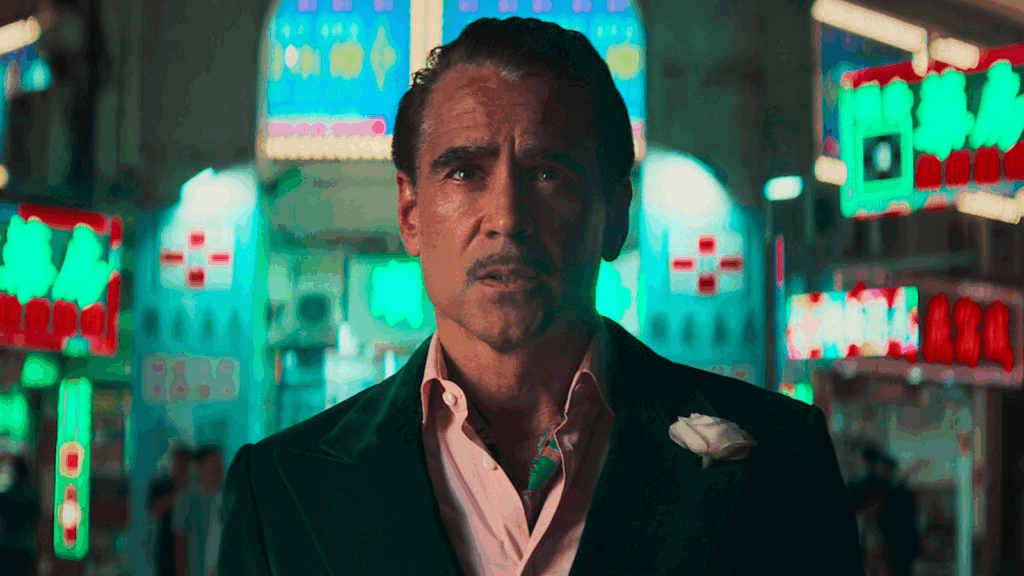
Ballad of a Small Player
Gala Premieres
Ballad of a Small Player is the new film by Swiss-Austrian director Edward Berger (All Quiet on the Western Front, Conclave). Based on a novel by Lawrence Osborne, the thriller follows a desperate gambler (Colin Farrell) in Macau. Addicted to both gambling and alcohol, he hopes to clear his fast-rising debts by winning big with the little money he has left. Along the way, he meets a mysterious casino employee (Fala Chen) and is pursued by a private investigator (Tilda Swinton).
Berger’s new film is well shot and beautifully captures the neon lights of Macau, but it quickly becomes apparent that it has little to offer beyond its shiny façade. While the film remains watchable, it never builds much tension or emotional investment—despite Volker Bertelmann’s propulsive score desperately trying to suggest otherwise. Farrell does his best to convey how lost his character feels, but there is only so much he can do with this script. As the film goes on, the audience learns more about his past and what he is running from, but this adds little dimension—especially since the film refuses to deal with it in a substantial manner.
Swinton is a delight whenever she is on screen, but she seems to belong in a different movie, highlighting the film’s tonal inconsistencies. Moreover, its portrayal of Macau has more than a tinge of orientalism, and a late reveal is neither surprising nor narratively satisfying. I was quite fond of Berger’s previous work, but I am afraid that Ballad of a Small Player must go down as a disappointment. 2/4 Stars
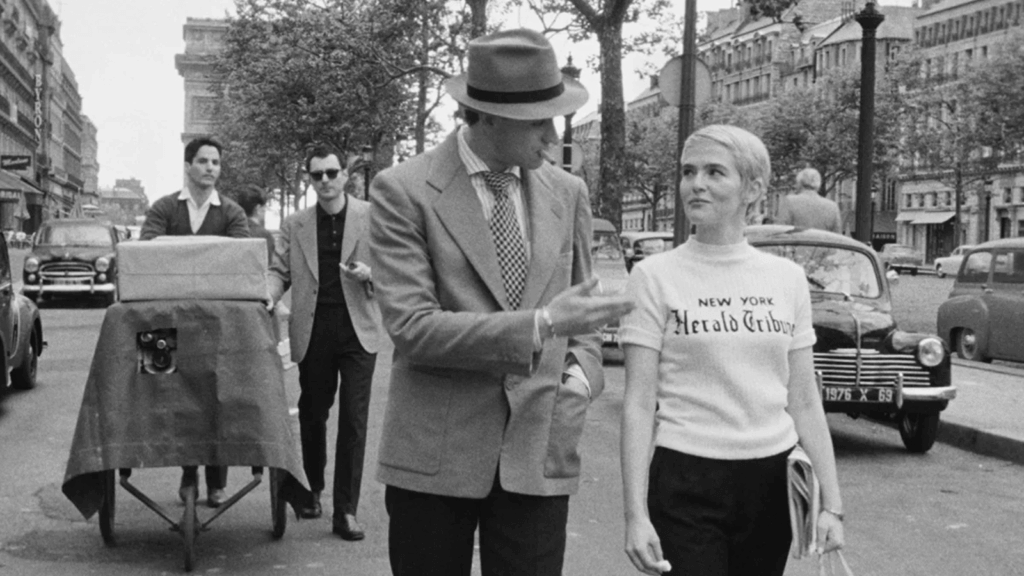
Nouvelle Vague
Gala Premieres
With Nouvelle Vague, Richard Linklater depicts the production of Breathless, Jean-Luc Godard’s famous debut feature. Breathless came out in 1960, notably the same year Linklater was born, and is regarded as one of the most important films of the French New Wave. Godard was at the forefront of that movement, which revolutionized cinema in the late 1950s and 1960s.
Nouvelle Vague is shot on black-and-white film in a 4:3 aspect ratio, complete with faux cigarette burns denoting the change of a reel. Moreover, it is told in French and marks Linklater’s first non-English film. With these flourishes, Linklater attempts to recapture the style of Breathless and other early French New Wave films, but he only partly succeeds. While his filmmaking is solid throughout, the viewer must wait until a playful end credits sequence to feel the kind of energy that films like Breathless convey from start to finish.
The tone of Nouvelle Vague is lighthearted and breezy. Cinephiles familiar with the French New Wave will enjoy the references to iconic scenes from Breathless, and to some of Godard’s famous quotes and techniques. It is also fun to see several legendary directors of the era—such as François Truffaut, Claude Chabrol, and Roberto Rossellini—show up, each introduced with a close-up and a title card. The same applies to witnessing Godard clash with his collaborators over his idiosyncratic methods.
Unfortunately, Nouvelle Vague does not offer much insight into Breathless or the French New Wave in general. It also ends on an anticlimactic note, concluding with uninspired title cards that feel closer to conventional biopics than to the spirit of the French New Wave. Additionally, newcomer Guillaume Marbeck, who plays Godard, does not fully capture the charisma of his real-life counterpart. He does, however, nail Godard’s look and mannerisms; he constantly smokes and wears sunglasses—even when it’s dark outside or when he is in a theater watching a movie.
Overall, Nouvelle Vague provides an entertaining viewing experience, but it ultimately feels slight and unremarkable. Cinephiles—and especially fans of the French New Wave—should still find enough to make the film feel worthwhile, at least if they can accept Nouvelle Vague neither taking itself nor its legendary characters too seriously. 2.5/4 Stars
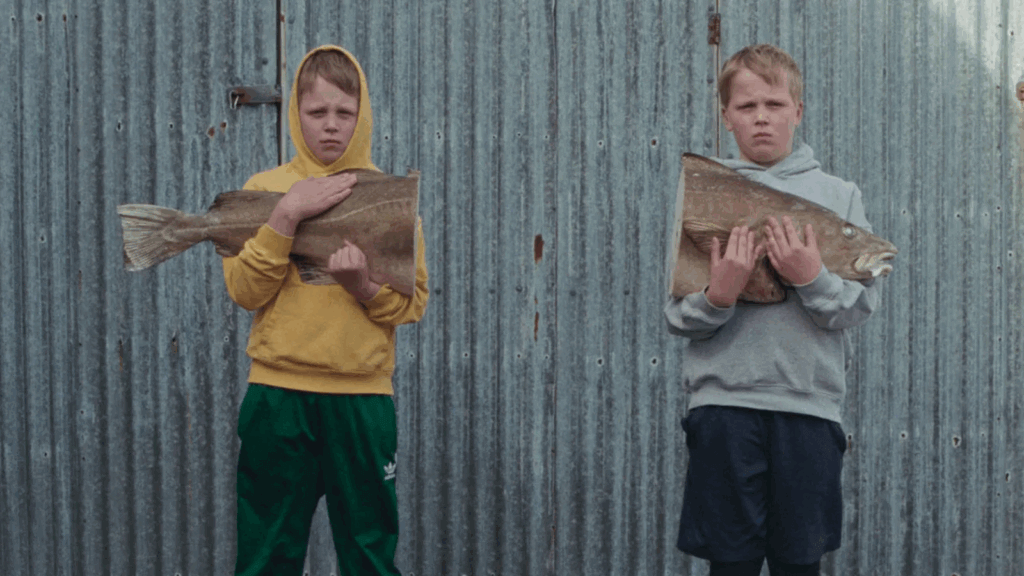
The Love That Remains
Signatures
Hlynur Pálmason’s follow-up to Godland retains two of that film’s most striking elements: gorgeous cinematography capturing the stunning landscapes of Iceland, and a scene-stealing dog. Apart from that, The Love That Remains marks a departure from its predecessor. Whereas Godland was an austere period piece about a Lutheran priest from Denmark sent to Iceland to establish a new church, Pálmason’s new film is set in the present and has a lighter tone.
The Love That Remains follows Anna and Magnús, a recently separated couple, and their three children, who are played by Pálmason’s real-life children. Without establishing the reason for the separation, the film throws the audience right into the family’s difficult new situation. Over the course of a year, both the parents and the children try to adjust to and come to terms with it as best they can. While it becomes clear that Anna and Magnús have grown apart, they still seem to be on relatively good terms. In the film’s best sequence, they take their kids on a nature trip filled with beautiful imagery, longing glances, and a palpable sense of nostalgia and regret.
The film does not have a conventional plot and instead follows its protagonists in an episodic and meandering manner. It also includes essayistic interludes and is surprisingly funny given its subject matter. Some of the film’s various episodes work better than others, and the same applies to its attempts at humor. One standout sequence depicts a comically narcissistic and privileged Swedish gallerist who comes to Iceland to examine artwork created by Anna. This not only works as comedy but also resonates thematically—with this and other sequences, The Love That Remains examines gender roles and expectations in addition to its exploration of family, growing up, and the pain of adulthood.
Thanks to strong performances, gorgeous visuals—shot by Pálmason himself, who not only serves as writer and director but also as cinematographer—and a dreamy score, The Love That Remains casts a spell for much of its runtime. Unfortunately, it loses momentum toward the end as it increasingly delves into surreal territory, which keeps the viewer at an emotional remove without adding much to the experience. Because of this, The Love That Remains does not quite reach the level of Godland, but it is still a worthy follow-up. 3/4 Stars
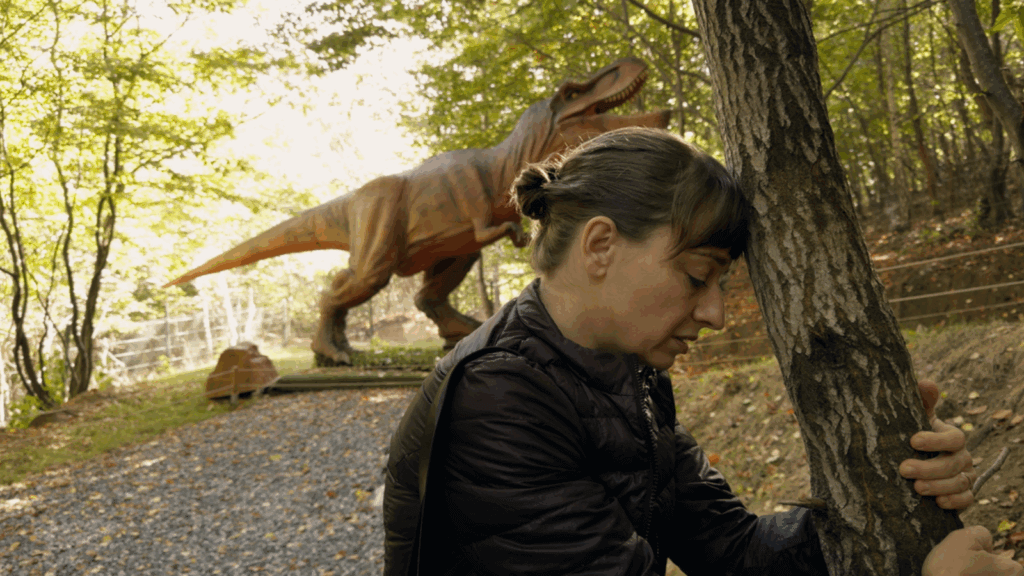
Kontinental ‘25
Signatures
Kontinental ’25 is the more satisfying of the two Radu Jude films that premiered in 2025—the other being Dracula. It is a homage to Roberto Rossellini’s neorealist classic Europe ’51 and follows a bailiff named Orsolya (expertly played by Eszter Tompa). As part of her job, she must enforce evictions in an apartment house owned by a large European corporation that wants to turn it into a luxury hotel. A poor and homeless man who has taken shelter in the small boiler room of the building commits suicide during his eviction. This leaves Orsolya shaken and consumed by guilt, and she begins to question the capitalist system she helps enforce.
With this setup, Jude once again returns to his signature terrain. Kontinental ’25 explores themes of capitalism, social inequality, corruption, gentrification, moral responsibility, and nationalism—Orsolya is part of the Hungarian minority in Romania, which plays a major role in how the suicide is perceived. Jude’s social commentary is as sharp and thought-provoking as ever, though viewers familiar with his work might feel that it does not add much beyond his previous films. Still, by grounding the story in a relatable central character and a realist style that refrains from the essayistic and collage-like elements of his recent work, Kontinental ’25 packs a punch.
Unfortunately, the film’s visual presentation leaves much to be desired. It was shot on a small budget with an iPhone in just ten days, and this shows. While Jude’s framing is impeccable, the image quality is poor, and the camera’s focus sometimes shifts without reason—presumably because the autofocus was left on. One could argue that this fits the film’s realist style, but I found it distracting and unsatisfying. Even so, the sharp social commentary and strong performances are enough to outweigh the flaws in presentation. Overall, Kontinental ’25 should prove rewarding for Jude fans and newcomers alike, even if its familiarity and rough execution keep it from joining the ranks of his best work. 3/4 Stars
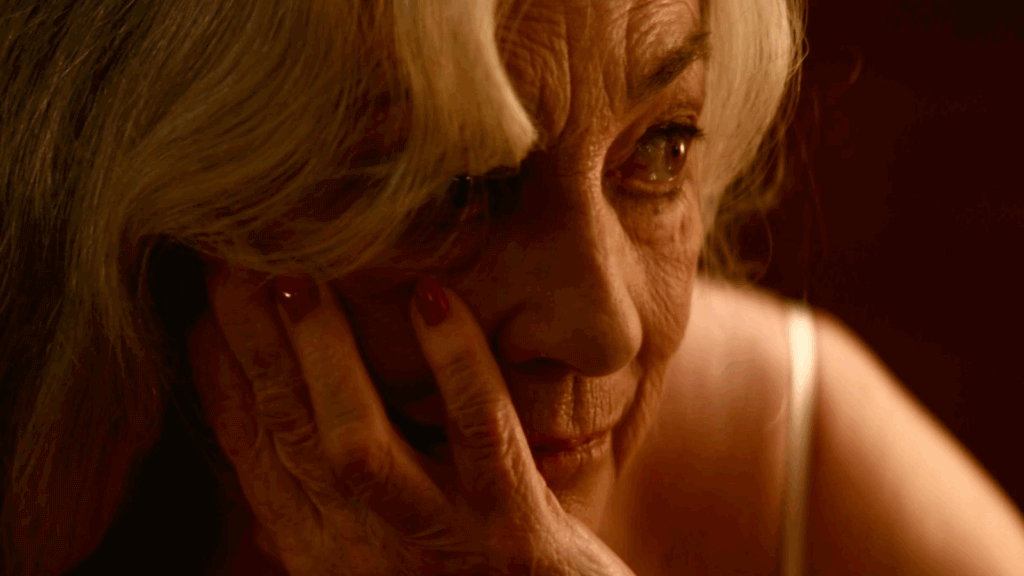
Calle Málaga
Gala Premieres
With Calle Málaga, Moroccan director Maryam Touzani returns to ZFF to present her follow-up to The Blue Caftan. Although once again set in Morocco, the film marks Touzani’s first work in Spanish. As a title card at the beginning of the film explains, numerous people fled from Spain to Tangier during Franco’s military dictatorship (among them Touzani’s grandmother—the director grew up speaking both Arabic and Spanish). While many Spaniards have since returned to their home country, there is still a relatively large Spanish community in the Moroccan city. Calle Málaga follows a member of this community, an elderly widow named Maria Angeles.
Maria Angeles is played by legendary Spanish actress Carmen Maura in a genius stroke of casting. Not only does Maura deliver one of the best performances I have seen all year, but she is most famous for her roles in films by Pedro Almodóvar (such as Volver)—the Spanish director who has often dealt with Franco’s military dictatorship throughout his career. While the emigration of Spaniards to Morocco is just the backdrop and not the main focus of Calle Málaga, Maura’s history with Almodóvar certainly adds texture to an already rich film.
One day, Maria Angeles’ daughter Clara, who lives in Spain with her children, comes to visit her mother. Seemingly out of nowhere, Clara announces that she has decided to sell the apartment Maria Angeles lives in, which her late father had left in Clara’s name. She asks Maria Angeles to move out as soon as possible, since empty apartments sell more quickly. Clara offers Maria either to move in with her and her children in Spain, or into a retirement home in Tangier. Unwilling to leave the place where she has spent her whole life, Maria begrudgingly chooses the latter option.
While the audience is firmly rooted in Maria Angeles’ perspective and shares her shock at Clara’s announcement, the latter is refreshingly not portrayed as a heartless villain. She is experiencing financial trouble after a nasty divorce and does not evict Maria out of malice, but out of desperation. As in The Blue Caftan, the film’s characters are three-dimensional and feel like real people.
Despite her age (Maura was 79 years old when the film was shot), Maria Angeles is full of vitality. It quickly becomes apparent that she is not suited for life in a retirement home. Because of this, and the fact that she still has the keys, she moves back into the not-yet-sold apartment—unbeknownst to Clara, who has returned to Spain and awaits news from the real estate agent she has hired. As Maria Angeles takes matters into her own hands, she goes through a kind of rebirth and finds new life energy.
Paralleling its main character’s arc, Calle Málaga turns from a drama into a charming and life-affirming comedy. The film contains several humorous sequences that are best left unspoiled—suffice it to say they had the entire audience at my screening laughing. Additionally, Maria Angeles experiences an unexpected and tender romance that is beautifully portrayed (and reminded me of last year’s excellent My Favourite Cake, another all-too-rare example of a sensual depiction of love at an older age).
While it is easy to get swept up by both Maria Angeles’ and the film’s charm, the audience never forgets the ongoing sale of the apartment. It hangs over the story like a ticking time bomb, providing tension beneath the sweet surface—inevitably, Clara will return once the real estate agent has found a buyer and discover what Maria Angeles has been up to. Unfortunately, the film’s open ending does not fully resolve its central conflict and feels somewhat underwhelming, especially compared to what came before. However, this does not change the fact that Calle Málaga is a pure delight. 3.5/4 Stars

David Hill is a lawyer from Switzerland. He has long had a passion for cinema, and he devotes most of his spare time to watching and researching films. His primary interest focuses on arthouse films, and he occasionally contributes to Deep Focus Review as a guest writer.
Thank You for Supporting Independent Film Criticism
Thank you for visiting Deep Focus Review. If the work on DFR has added something meaningful to your movie watching—whether it’s context, insight, or an introduction to a new movie—please consider supporting it. Your contribution helps keep this site running independently.
There are many ways to help: a one-time donation, joining DFR’s Patreon for access to exclusive writing, or showing your support in other ways. However you choose to support the site, please know that it’s appreciated.
Thank you for reading, and for making this work possible.
Brian Eggert | Critic, Founder
Deep Focus Review


